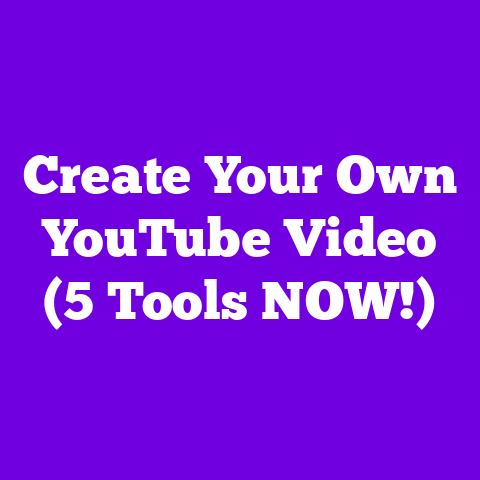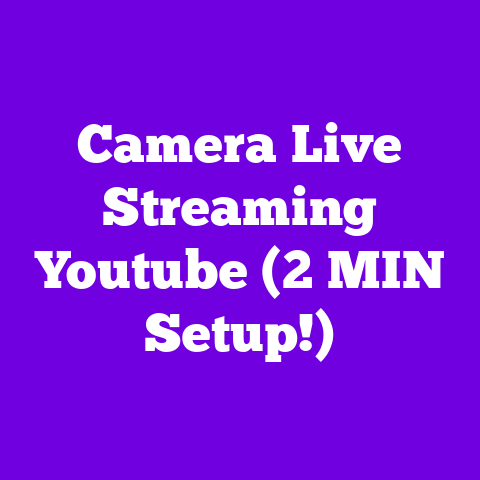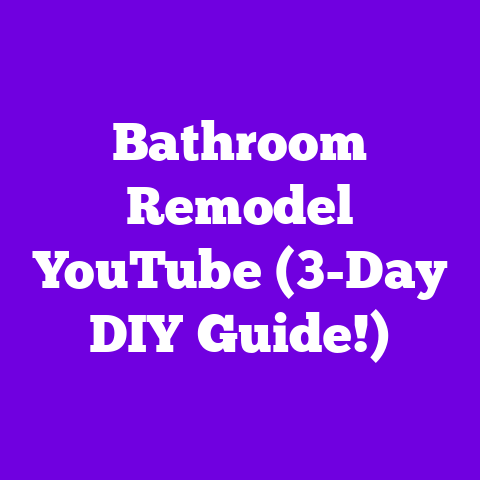Animated Web Series YouTube (3 Episodes To MILLIONS!)
Remember Saturday mornings as a kid?
The cereal, the pajamas, and, most importantly, the cartoons.
Animation had this incredible power to transport us to other worlds, teaching us lessons and sparking our imaginations.
Fast forward to today, and the magic of animation hasn’t faded.
It’s just evolved.
We’re in a golden age of animated web series, especially on platforms like YouTube.
These bite-sized stories are captivating audiences of all ages, filling a niche that traditional television often misses.
And here’s the exciting part: In 2025, I truly believe creating an animated web series that explodes to millions of viewers in just three episodes isn’t a pipe dream.
It’s absolutely achievable.
In this article, I’m going to break down exactly how you can make that happen.
Section 1: The Evolution of Animated Content on YouTube
YouTube animation has come a long way from stick figure fights and poorly rendered Flash animations (though, let’s be honest, those had their charm!).
I remember when early user-generated content was king.
It was raw, experimental, and often hilarious, but it lacked the polish and storytelling depth to truly break through.
Then, something shifted.
Technology became more accessible. Animation software, once the domain of professional studios, became cheaper and easier to use.
Programs like Toon Boom Harmony, Adobe Animate, and even free alternatives like Blender opened doors for aspiring animators.
This wave of accessibility led to a surge of talented animators and independent studios creating professional-quality content directly for YouTube.
Think about series like Hazbin Hotel or Helluva Boss by Vivienne Medrano (VivziePop).
These shows started as independent passion projects on YouTube and quickly amassed millions of views, spawning dedicated fanbases and even attracting the attention of major studios.
What made them so popular?
- Unique Visual Style: Distinct character designs and animation style that set them apart.
- Compelling Storytelling: Engaging narratives with relatable characters, even in fantastical settings.
- Strong Community Engagement: Active interaction with fans through social media and Q&A sessions.
- Consistent Release Schedule: Regular uploads to keep the audience hooked and coming back for more.
These series proved that you didn’t need a massive studio budget to create a successful animated web series.
All you needed was talent, passion, and a smart strategy.
Section 2: Understanding Your Audience
Who are you making this for?
Seriously, stop and think about it.
“Everyone” is never the answer.
Defining your target audience is crucial for success.
Are you aiming for kids aged 6-12?
Teens obsessed with anime?
Adults looking for dark comedy?
Each group has different interests, viewing habits, and expectations.
Consider these factors:
- Age: What age group are you targeting?
- Interests: What are their hobbies, passions, and favorite genres?
- Viewing Habits: When do they watch YouTube?
What kind of content do they typically consume? - Platforms: Are they active on other social media platforms like TikTok, Instagram, or Discord?
Audience engagement is key. Don’t just create in a vacuum.
Ask for feedback.
Read the comments.
Run polls on social media.
See what your audience responds to and adjust your content accordingly.
Look at RWBY by Rooster Teeth.
This anime-influenced series started with simple trailers and quickly built a massive following.
Rooster Teeth actively listened to their fans, incorporating feedback into the show’s development and creating a strong sense of community.
How did they do it?
- Direct Interaction: Regular live streams and Q&A sessions with the creators.
- Community Forums: Dedicated online spaces for fans to discuss the show and share their theories.
- Fan Art Contests: Encouraging creativity and rewarding fan engagement.
- Merchandise: Offering exclusive merchandise that caters to the fanbase.
This level of engagement not only strengthens the connection between the creators and the audience but also provides valuable insights for future content.
Section 3: Crafting Compelling Stories and Characters
Story is king.
And in the world of animated web series, you need to grab your audience’s attention fast.
Those first three episodes are your chance to hook them and make them desperate for more.
What makes a story memorable?
- Relatable Characters: Even if your characters are fantastical creatures, they need to have human emotions and motivations.
- Conflict: Every good story needs conflict, whether it’s internal (a character struggling with their own demons) or external (a character facing a powerful antagonist).
- High Stakes: What will happen if the characters fail?
The higher the stakes, the more invested the audience will be. - Emotional Resonance: Make your audience feel something.
Make them laugh, cry, or feel the adrenaline rush of a thrilling action sequence.
Character design is just as important. Your characters need to be visually appealing and instantly recognizable.
Think about the iconic character designs of Steven Universe.
Each character has a unique silhouette, color palette, and personality that reflects their role in the story.
How do you create compelling arcs in the first three episodes?
- Establish the World: Introduce the setting, the rules, and the main conflicts.
- Introduce the Main Characters: Give them clear motivations and personalities.
- Create a Hook: End each episode with a cliffhanger or a major plot twist that leaves the audience wanting more.
For example, let’s say you’re creating a series about a group of teenagers who discover they have superpowers.
- Episode 1: Introduce the characters, their normal lives, and the first hints of their powers.
- Episode 2: The characters start to experiment with their powers, facing challenges and learning to control them.
- Episode 3: A major threat emerges, forcing the characters to team up and use their powers to protect their town.
By the end of the third episode, the audience should be invested in the characters, the world, and the overarching conflict.
They should be dying to know what happens next.
Section 4: The Art of Animation
Okay, let’s talk animation styles.
You’ve got 2D, 3D, stop-motion, and everything in between.
Each style has its own unique appeal and can attract different demographics.
- 2D Animation: Classic, versatile, and often more budget-friendly. Think Adventure Time or Bojack Horseman.
- 3D Animation: Offers a more realistic and immersive experience.
Think Arcane or Love, Death & Robots. - Stop-Motion Animation: A time-consuming but visually stunning technique that creates a unique tactile feel.
Think Coraline or Wallace & Gromit.
Visual storytelling is crucial. Animation isn’t just about moving pictures; it’s about using visuals to communicate emotions, ideas, and information.
Think about how Disney uses color to convey different moods in their films.
How do you create a distinctive visual style?
- Experiment with different techniques: Don’t be afraid to try new things and push the boundaries of your chosen animation style.
- Develop a unique color palette: Choose colors that reflect the tone and themes of your series.
- Pay attention to detail: The small details, like character expressions and background elements, can make a big difference in the overall impact of your animation.
Let’s talk production. Pre-production is where the magic really happens.
This is where you plan everything out, from the story and characters to the animation style and the overall look and feel of the series.
- Storyboarding: Visualize each scene before you start animating.
This will help you plan your shots and pacing. - Character Design: Develop detailed character designs that reflect their personalities and roles in the story.
- Background Design: Create detailed backgrounds that establish the setting and atmosphere of your series.
- Animatics: Create a rough animated version of your series to test the timing and pacing.
Post-production is where you put the finishing touches on your series.
This includes editing, sound design, and adding music.
- Editing: Cut together your animated scenes to create a cohesive and engaging narrative.
- Sound Design: Add sound effects and music to enhance the atmosphere and emotional impact of your series.
- Color Correction: Adjust the colors of your animation to create a consistent and visually appealing look.
Section 5: Marketing Strategies for Success
You’ve got an amazing animated web series.
Now, how do you get people to watch it?
Marketing is key.
YouTube SEO is essential. Optimize your videos with relevant keywords, compelling titles, and eye-catching thumbnails.
Use tools like TubeBuddy or VidIQ to research keywords and track your performance.
Social media is your best friend. Build a community around your series on platforms like Twitter, Instagram, and TikTok.
Share behind-the-scenes content, character reveals, and sneak peeks of upcoming episodes.
How do you build a community?
- Engage with your fans: Respond to comments, answer questions, and run polls.
- Create a Discord server: Give your fans a dedicated space to connect with each other and with you.
- Run contests and giveaways: Reward your fans for their support.
- Create fan art challenges: Encourage your fans to create their own artwork based on your series.
Collaborations and partnerships are powerful. Reach out to other creators in the animation space, brands, or influencers to cross-promote your series.
Here are some ideas:
- Guest appearances: Invite other animators to voice characters in your series.
- Cross-promotions: Promote each other’s series on your respective channels.
- Sponsored content: Partner with brands to create sponsored videos or merchandise.
- Influencer marketing: Pay influencers to promote your series to their followers.
I’ve seen firsthand how collaborations can catapult a series to new heights.
Partnering with the right people can expose your series to a whole new audience and generate a ton of buzz.
Section 6: Monetization and Sustainability
Creating an animated web series is a labor of love, but it’s also a business.
You need to find a way to monetize your content so you can keep creating quality episodes.
Here are some monetization strategies:
- Ad Revenue: Earn money from ads that play before, during, or after your videos.
- Channel Memberships: Offer exclusive perks to viewers who pay a monthly fee to support your channel.
- Merchandise: Sell merchandise, like t-shirts, posters, and figurines, based on your series.
- Crowdfunding: Ask your fans to donate money to support your series through platforms like Patreon or Kickstarter.
- Sponsorships: Partner with brands to create sponsored videos or product placements.
Building a sustainable business model is crucial. Don’t rely on a single source of income.
Diversify your revenue streams so you’re not completely dependent on ad revenue or crowdfunding.
Here are some tips for building a sustainable business model:
- Create high-quality content that people are willing to pay for.
- Build a strong community around your series.
- Diversify your revenue streams.
- Be patient and persistent.
It takes time to build a successful animated web series, but it’s definitely possible with the right strategy and a lot of hard work.
Section 7: Future Trends in Animated Web Series
What does the future hold for animated web series?
I think we’re going to see some exciting changes in the coming years.
Technology will play a big role. AI-powered animation tools will make it easier and faster to create high-quality animation.
VR and AR technologies will create more immersive and interactive experiences.
Viewer preferences will continue to evolve. Audiences are becoming more sophisticated and demanding more complex and nuanced stories.
They’re also looking for more diverse and inclusive representation in animated content.
Here are some trends to watch out for:
- AI-generated animation: AI tools are already being used to automate some of the more tedious aspects of animation, like in-betweening and cleanup.
In the future, we may see AI being used to generate entire animated scenes. - VR and AR animation: VR and AR technologies are creating new opportunities for immersive and interactive animation experiences.
Imagine being able to step inside your favorite animated world and interact with the characters. - Interactive storytelling: Interactive storytelling is becoming increasingly popular in video games and other forms of entertainment.
In the future, we may see more animated web series that allow viewers to make choices that affect the outcome of the story. - Diverse and inclusive representation: Audiences are demanding more diverse and inclusive representation in animated content.
This includes characters of different races, ethnicities, genders, sexual orientations, and abilities.
The future of animated web series is bright.
With the right combination of creativity, technology, and marketing, you can create a series that resonates with millions of viewers and builds a lasting legacy.
Conclusion
The world of animated web series on YouTube is bursting with potential.
It’s a space where your creativity can truly shine and your stories can connect with a global audience.
Don’t be afraid to experiment, push boundaries, and tell the stories that you’re passionate about.
I truly believe that with the right approach, it is possible to achieve millions of views in just three episodes.
It takes hard work, dedication, and a smart strategy, but the rewards are well worth it.
So go out there, harness your creativity, and start building your animated empire.
The world is waiting to see what you’ve got!





